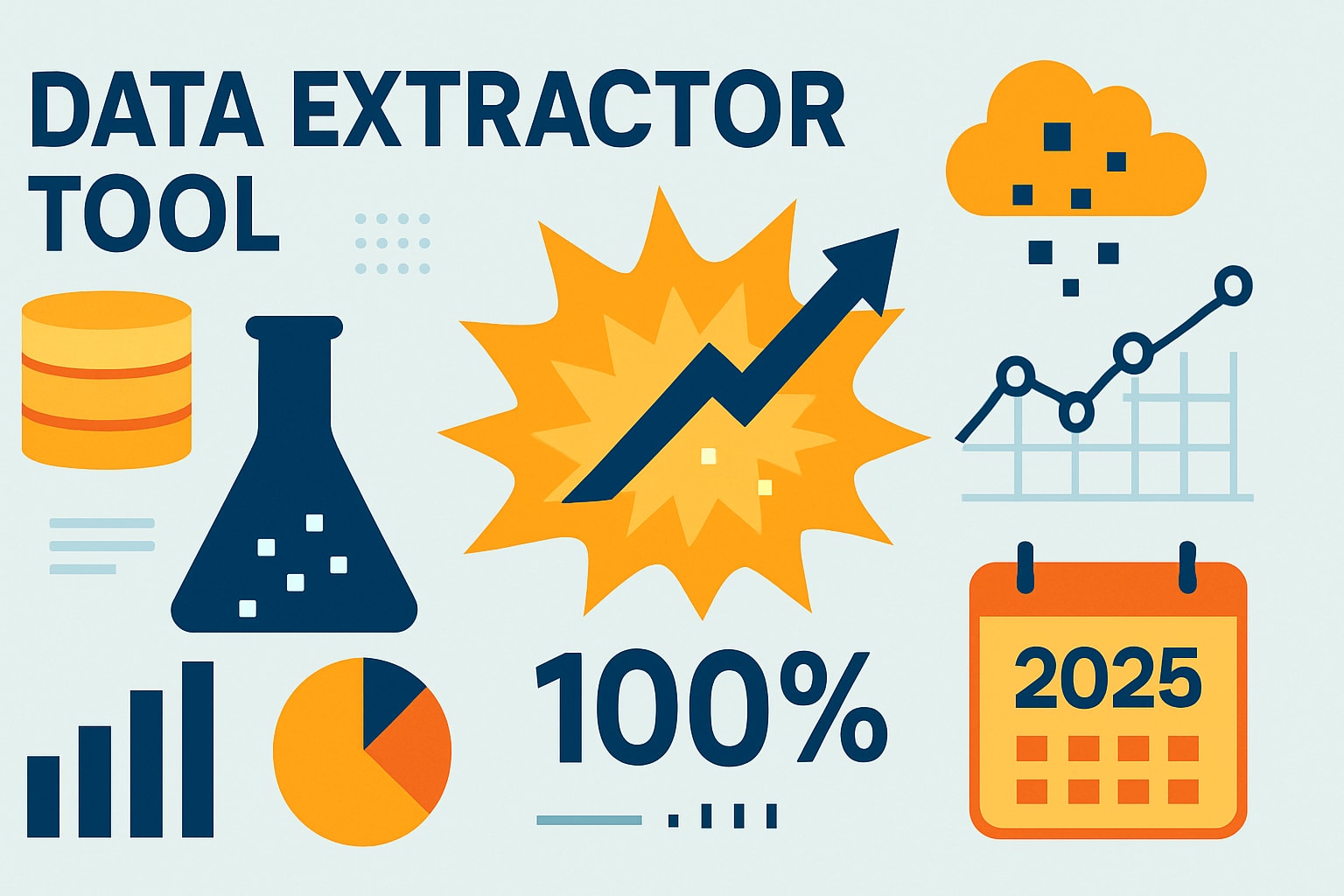In 2025, data-driven decision-making is accelerating across every industry. Organizations are harnessing more data than ever before, fueling innovation and shaping competitive strategies.
To truly unlock this potential, choosing the right data extractor tool is now a mission-critical decision. The right solution empowers professionals to gather, organize, and analyze information faster, driving better business outcomes.
This article is designed to help you pinpoint the best data extractor tool for your unique needs. You will discover how these tools streamline workflows, automate tedious tasks, and optimize your data extraction process.
Explore our top 9 picks for 2025, each with distinct strengths to match different business goals. Find out which tool can help you work smarter and stay ahead in a rapidly evolving landscape.
The Importance of Data Extraction Tools in 2025
The modern business world faces a data explosion. Every organization now deals with information from cloud platforms, SaaS apps, emails, web pages, PDFs, and more. As the data landscape evolves, the right data extractor tool becomes indispensable for handling this complexity and converting raw data into business value.
Evolving Data Landscape and Challenges
In 2025, organizations manage data from more sources than ever before. Cloud storage, SaaS platforms, web content, emails, and scanned documents all contribute to a complex ecosystem. The rise of unstructured data is striking, with IDC reporting that 80% of enterprise information is now unstructured.
Automation is no longer optional. Manual extraction is slow and error-prone, and compliance requirements like GDPR and CCPA add further pressure. According to Data Extraction Software Market Growth Projections, demand for modern data extractor tool solutions is soaring as companies seek to streamline and secure their processes.
Business Impact and Competitive Advantage
A powerful data extractor tool delivers more than just convenience. It accelerates access to actionable insights, allowing businesses to innovate quickly. By automating repetitive tasks, companies can reduce manual labor, cut costs, and allocate resources to higher-value activities.
Enhanced data quality and accuracy drive better analytics and reporting. For instance, Gartner found that retailers implementing automated extraction tools achieved a 30% faster time-to-insight, giving them a clear competitive edge. The right tool transforms raw information into a strategic asset for growth.
Key Features to Look for in 2025 Tools
Selecting the right data extractor tool requires careful evaluation of features. Artificial intelligence and machine learning have become essential, offering flexible and accurate extraction from diverse sources. Support for multiple formats, including web, PDFs, images, and emails, is now standard.
Businesses should prioritize tools that offer scalability, robust security, and seamless integration with existing workflows. Real-time extraction and advanced automation help teams stay agile. As data needs grow, these features ensure that technology investments remain future-proof.
Common Use Cases Across Industries
The versatility of a data extractor tool is evident across sectors:
- Financial services rely on extraction for invoices and statements.
- Healthcare providers digitize patient records for analysis.
- E-commerce companies monitor prices and product listings.
- Legal professionals automate contract review and data mining.
Each industry leverages these tools to reduce manual work, improve accuracy, and comply with sector-specific regulations. Customizable extraction workflows make it possible to address unique business challenges with confidence.
9 Essential Data Extractor Tool Picks for 2025
Navigating the crowded landscape of data extraction can be daunting, but choosing the right data extractor tool can transform how your business captures, processes, and leverages information. The following nine tools stand out in 2025 for their innovation, reliability, and ability to address a wide range of use cases.
Below, you will find a detailed breakdown of each data extractor tool, including pricing, features, unique strengths, and ideal users. This list will guide you toward the best fit for your specific data needs, whether you are a solo entrepreneur or an enterprise team.
Octoparse
Octoparse is a leading data extractor tool designed for users who need to collect data from complex websites without writing code. Its point-and-click interface makes web scraping accessible to marketers, researchers, and e-commerce analysts alike.
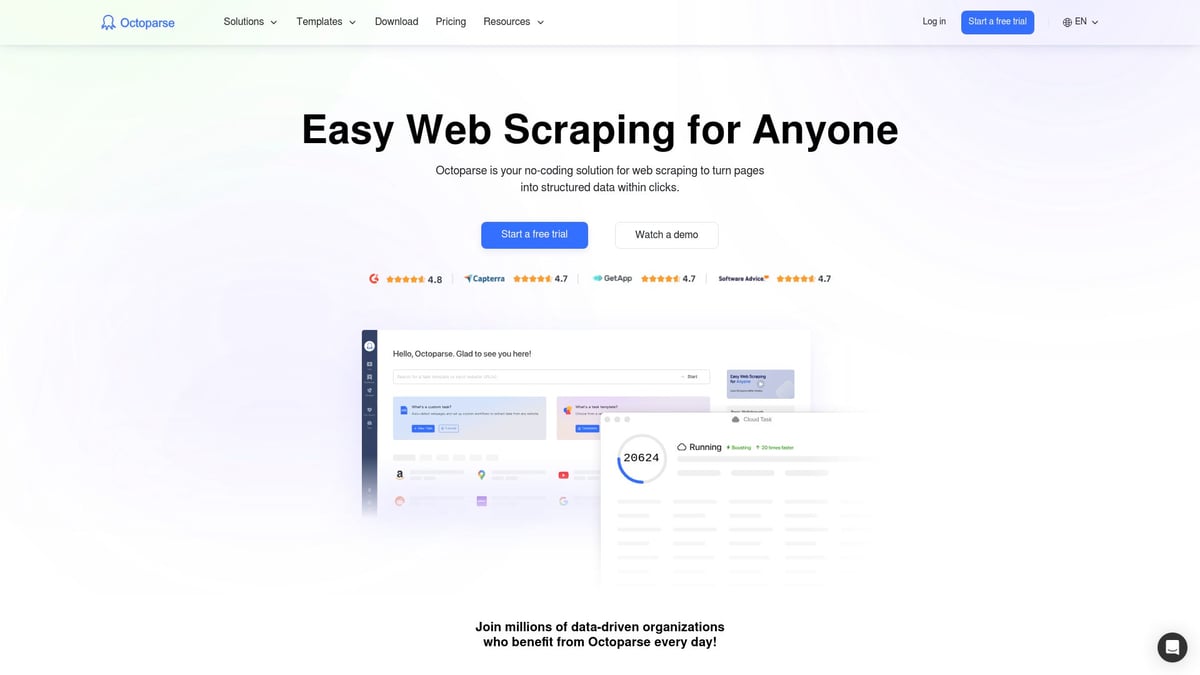
Octoparse offers a free plan, with paid options starting at $75 per month. The core features include no-code web scraping, a user-friendly visual workflow builder, cloud-based scheduling, and robust API integration. These make Octoparse a flexible solution for extracting information from dynamic sites, including those built with JavaScript or AJAX.
The unique selling point of this data extractor tool is its accessibility for non-coders and its ability to handle sites that might otherwise block or limit automated scraping. Octoparse is ideal for users who want rapid setup and powerful extraction logic without diving deep into scripting.
Pros: Quick setup, intuitive interface, handles complex web structures.
Cons: Customization can be limited for advanced users seeking granular control.
Octoparse is a solid choice for anyone seeking to streamline their data extraction workflows in 2025.
ParseHub
ParseHub stands out as a data extractor tool for its visual approach to scraping data from dynamic and interactive websites. With both a free version and paid plans starting at $189 per month, ParseHub caters to a broad spectrum of users.
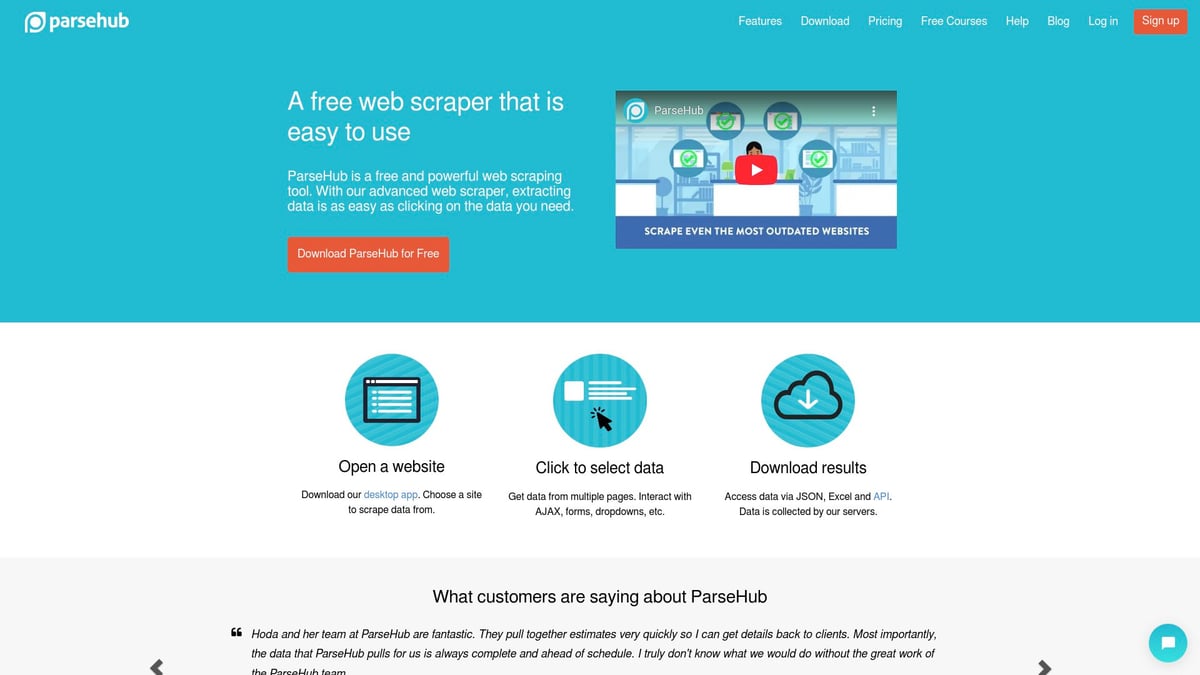
Its core features include visual data extraction, support for JavaScript-heavy and dynamic websites, and the flexibility to run extractions on both desktop and cloud platforms. The interface is intuitive for simple projects but offers depth for more complex, multi-page navigation tasks.
What distinguishes this data extractor tool is its ability to manage highly interactive sites and automate data collection across multiple pages or forms. This makes ParseHub ideal for data journalists, competitive intelligence professionals, and academic researchers.
Pros: Intuitive interface, comprehensive documentation, powerful for advanced use cases.
Cons: Steeper learning curve for complex projects, higher cost at advanced tiers.
ParseHub is a reliable solution when your data extraction needs demand flexibility and thoroughness.
Diffbot
Diffbot is a sophisticated data extractor tool tailored for enterprises that need to extract structured information at scale. Its pricing is custom, following a pay-as-you-go model, making it suitable for organizations with large, variable workloads.
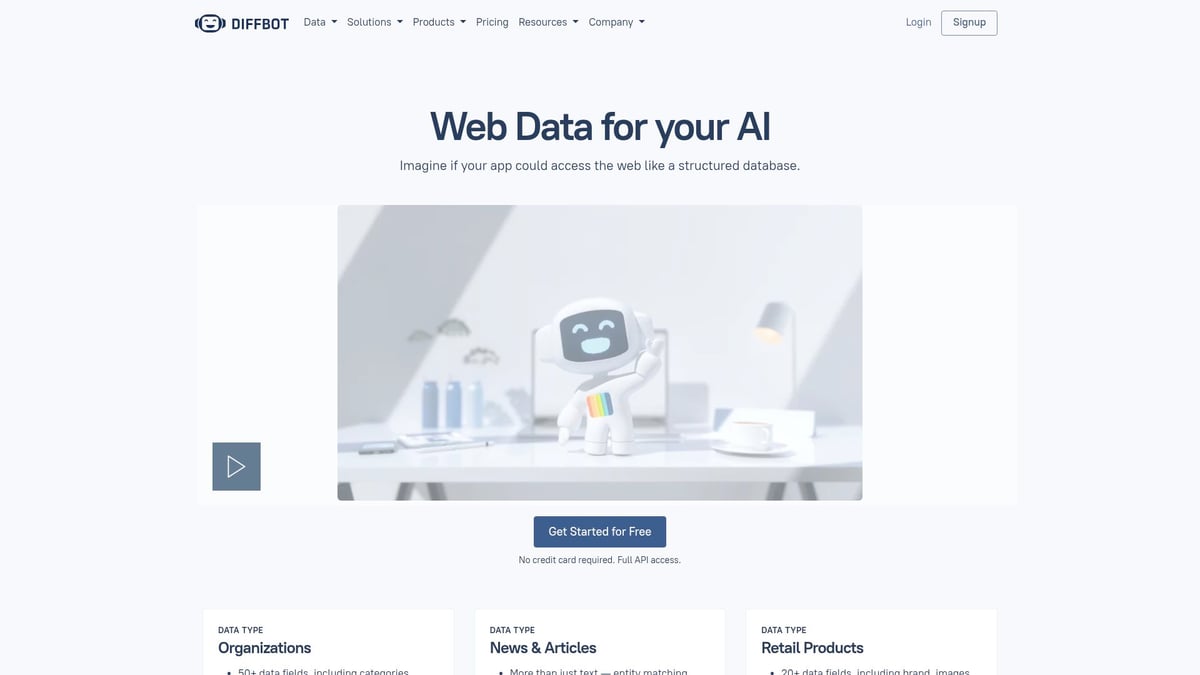
The tool’s core features include AI-powered web data extraction, automatic data structuring, and access to a comprehensive Knowledge Graph. Diffbot leverages machine learning to understand web content deeply, delivering high accuracy even with unstructured or complex sources.
This data extractor tool’s unique selling point is its scalable API and deep web understanding, which benefit data scientists, knowledge managers, and enterprises handling big data. The technical setup is more advanced but pays off in precision and scalability.
Pros: High extraction accuracy, scalable for large datasets, robust API.
Cons: Requires technical expertise, enterprise-level pricing.
For organizations with complex data needs and a focus on automation, Diffbot is a top contender in 2025.
Import.io
Import.io positions itself as an enterprise-grade data extractor tool with a focus on real-time web data integration. Pricing starts at $299 per month, with custom plans available for larger organizations.
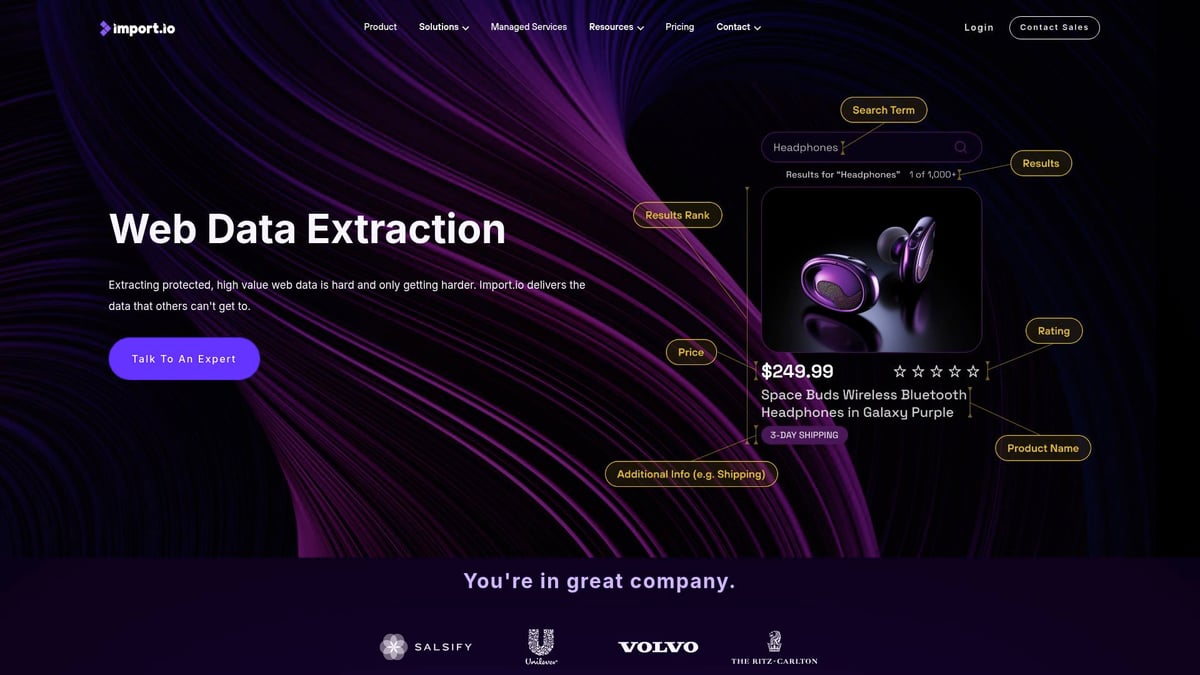
Its core features include real-time extraction, rich data transformation options, API access, and robust security. Import.io is built for end-to-end data workflows, supporting everything from collection to integration with analytics platforms.
What sets this data extractor tool apart is its comprehensive platform and strong customer support. It excels at handling large-scale, mission-critical extraction projects, making it a favorite among market researchers and data integration professionals.
Pros: Complete feature set, strong support, high security standards.
Cons: Higher cost, may be overkill for small businesses or simpler projects.
Organizations with complex, ongoing data needs will find Import.io an invaluable asset.
DocParser
DocParser is a specialized data extractor tool focused on parsing data from PDFs, scanned documents, and images. Starting at $39 per month, it provides custom parsing rules and seamless workflow automation.
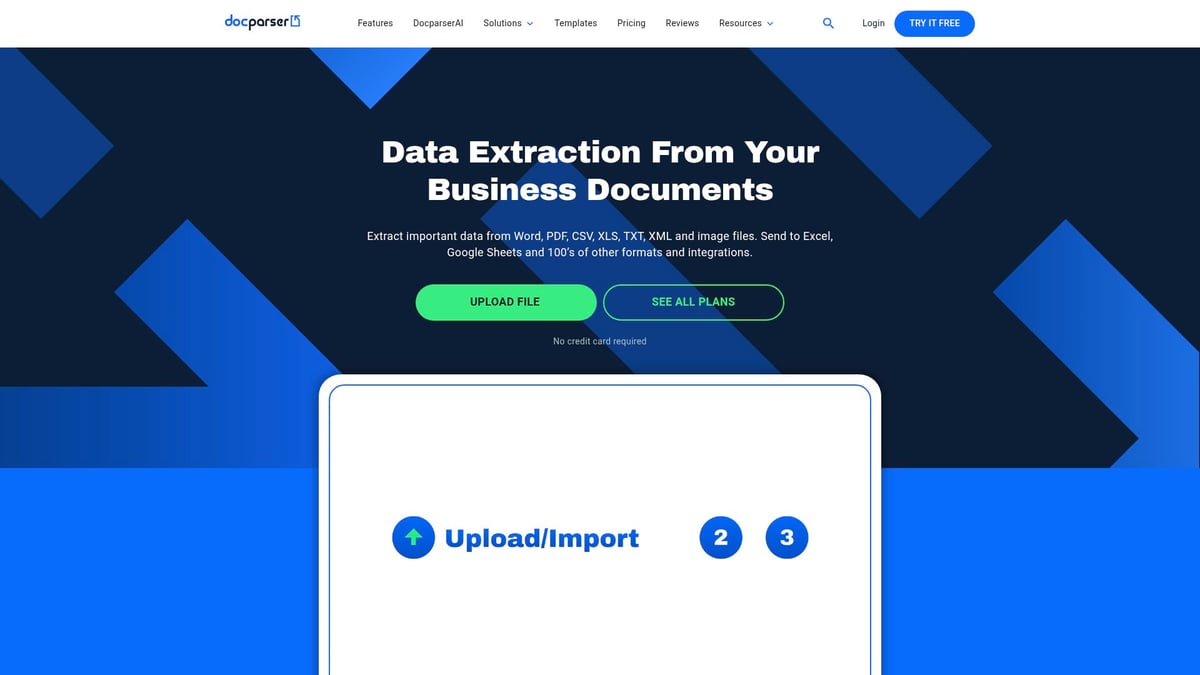
Its core features include the ability to accurately extract structured and unstructured data from a variety of document formats. DocParser integrates with popular platforms like Zapier and Salesforce, streamlining document automation for finance, HR, and logistics teams.
The unique selling point of this data extractor tool is its document-centric automation, which is especially useful for organizations handling high volumes of paperwork. For those seeking to Extract Data from PDF Documents, DocParser offers an easy and reliable solution.
Pros: Accurate parsing, easy workflow automation, strong integrations.
Cons: Limited to document extraction, not suitable for web scraping.
DocParser is ideal for small to mid-sized businesses looking to automate their document-driven processes in 2025.
WebHarvy
WebHarvy is an affordable data extractor tool that uses a point-and-click interface to simplify web scraping. With a one-time fee starting at $139, it appeals to small businesses, researchers, and hobbyists.
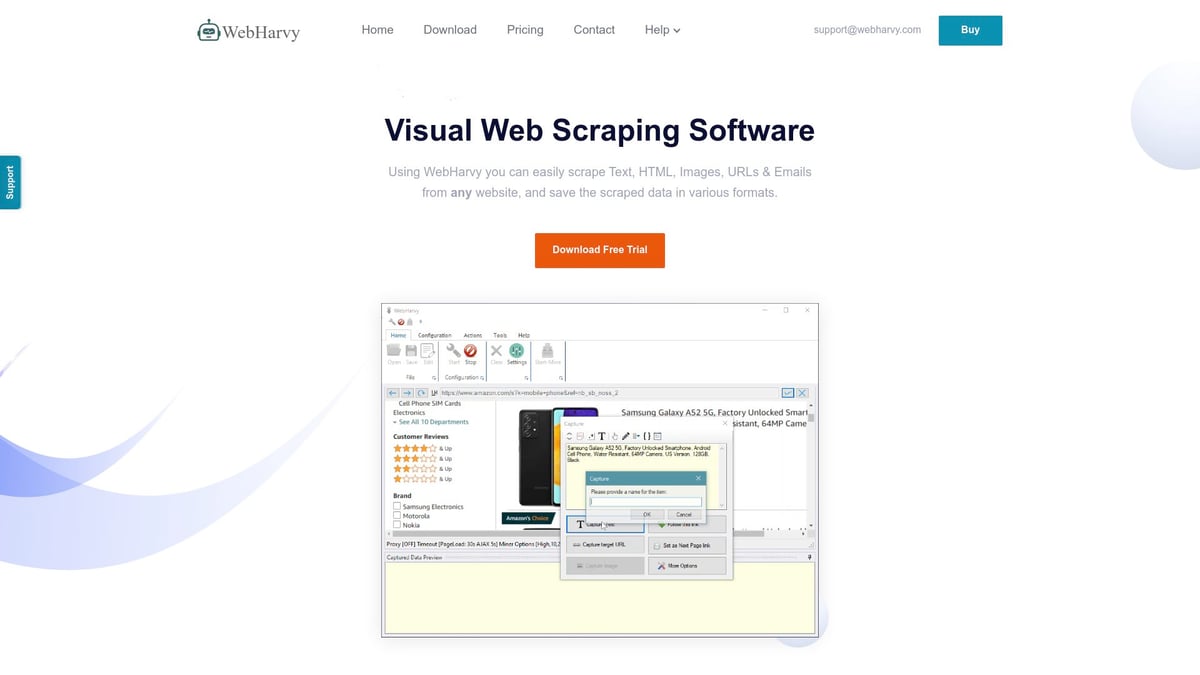
The tool’s core features include visual pattern detection, text and image extraction, and support for regular expressions. WebHarvy’s built-in browser allows users to configure extraction tasks without coding.
This data extractor tool’s unique value lies in its simplicity and cost-effectiveness. However, it is limited to Windows and does not offer cloud-based features, which may be a drawback for some users.
Pros: User-friendly, affordable, visual configuration.
Cons: Windows-only, lacks cloud functionality, less suited for large-scale projects.
WebHarvy is perfect for those who need straightforward, desktop-based web scraping without ongoing subscription costs.
UiPath
UiPath is a powerful data extractor tool embedded within a broader Robotic Process Automation (RPA) platform. It offers a free Community Edition, with enterprise plans from $420 per month.
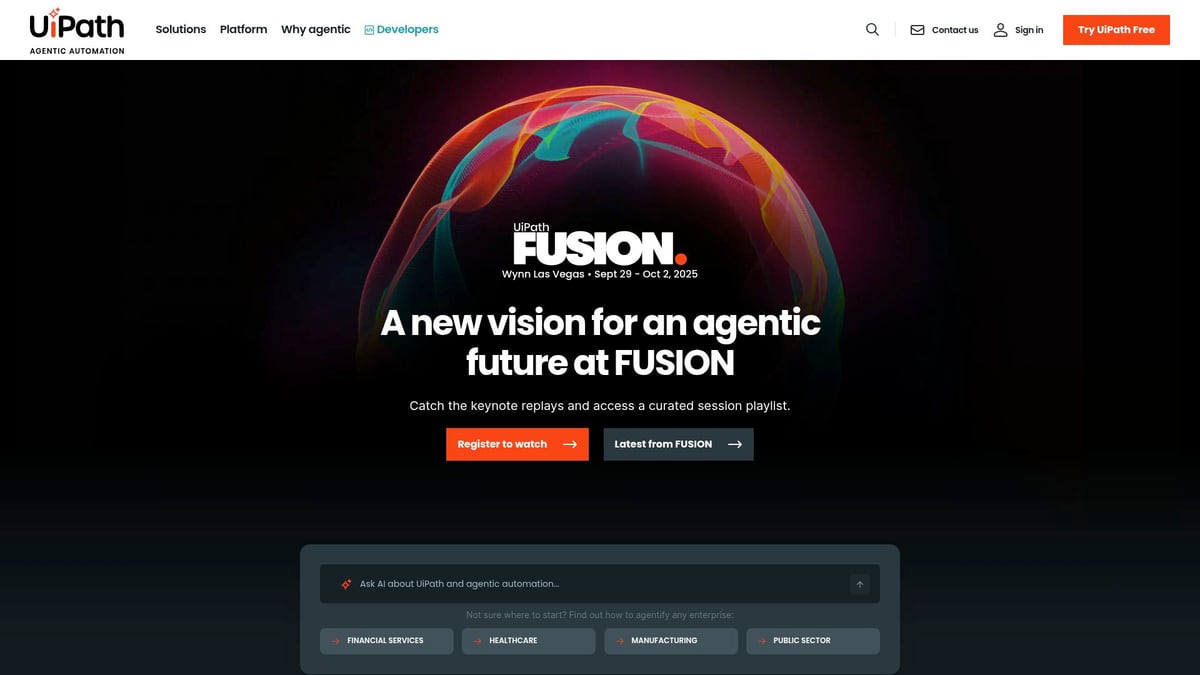
Key features include automated data scraping, workflow automation, and integration with legacy systems. UiPath excels at orchestrating end-to-end business processes, making it a preferred choice for IT, operations, and enterprise automation teams.
The main strength of this data extractor tool is its enterprise-grade automation and vast community support. While powerful, it requires some technical expertise to maximize its capabilities.
Pros: Advanced automation, large support community, integration flexibility.
Cons: Higher price point, steeper learning curve, may be excessive for basic extraction.
UiPath is recommended for organizations aiming to automate complex, multi-step data extraction and business workflows.
Mozenda
Mozenda is a cloud-based data extractor tool designed for agencies, enterprises, and data providers managing large-scale projects. Pricing starts at $99 per month.
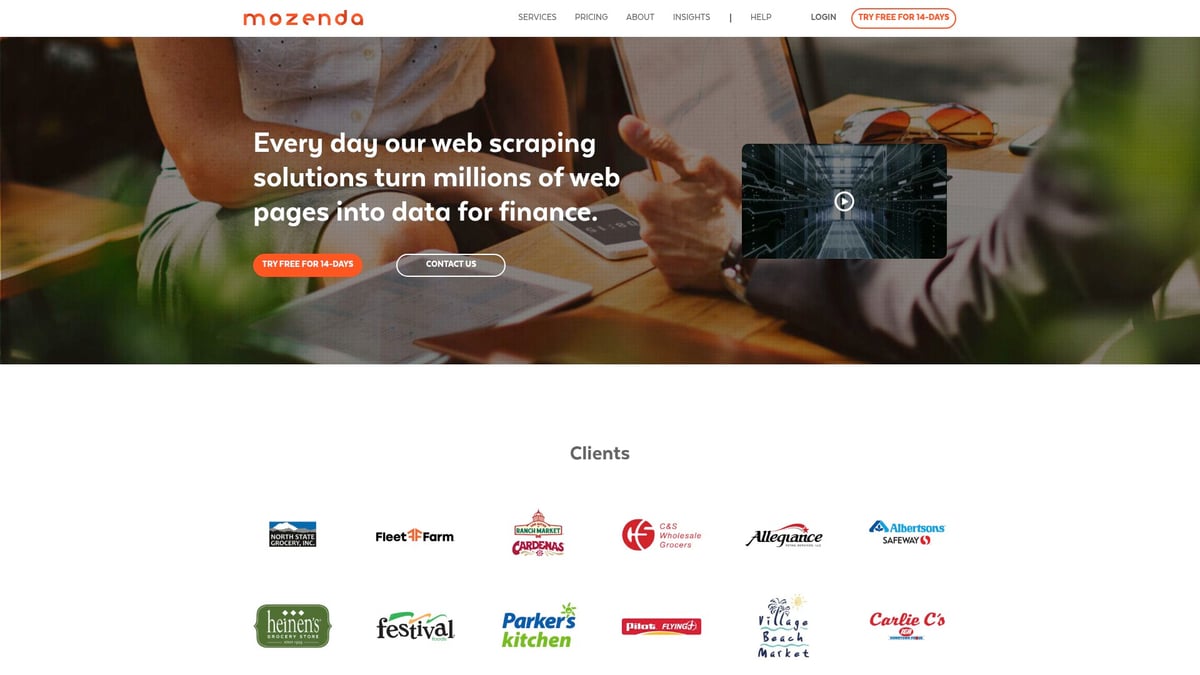
The platform’s core features include scheduled extractions, collaborative project management, and export in multiple formats. Mozenda’s strength lies in its scalability and flexibility for handling large volumes of data.
This data extractor tool stands out for its team collaboration features and strong customer support. However, the user interface can be overwhelming for newcomers.
Pros: Scalable, flexible, team-oriented, responsive support.
Cons: Complex UI for beginners, premium pricing for advanced features.
Mozenda is a solid choice for teams needing a collaborative and scalable data extraction platform in 2025.
Hevo Data
Hevo Data is a no-code data extractor tool that automates data pipelines from over 150 sources. It offers a free tier, with paid plans starting at $239 per month.
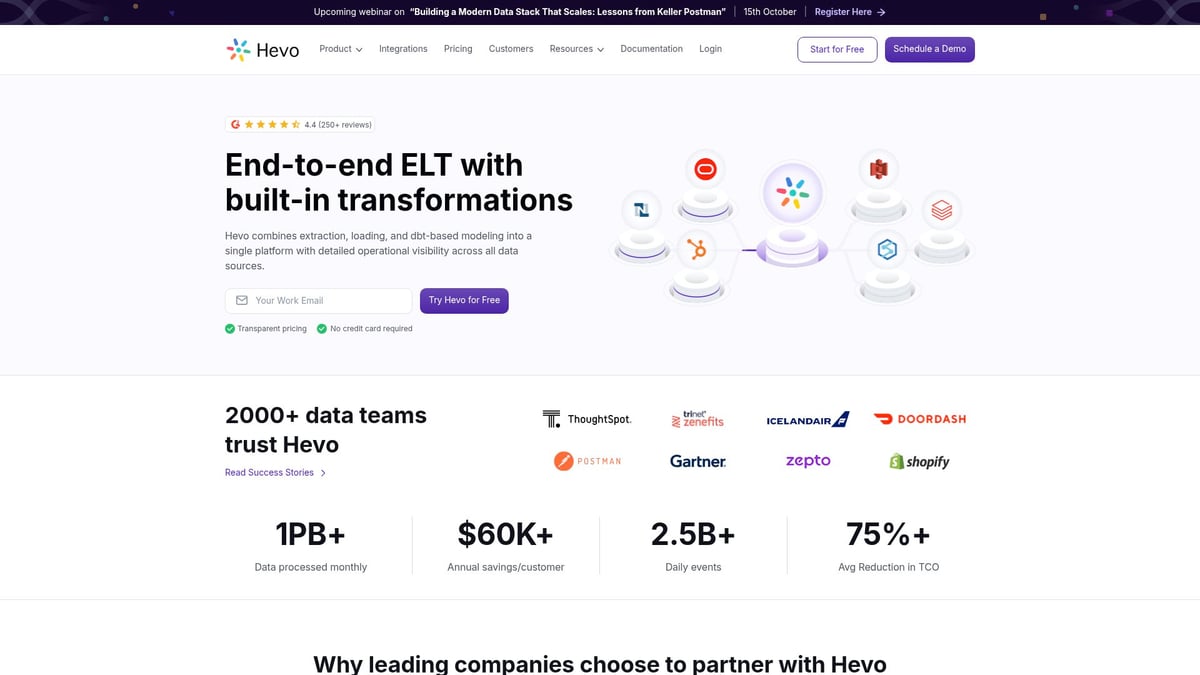
Key features include real-time extraction, seamless integration, and strong data transformation capabilities. Hevo Data’s automated ETL (Extract, Transform, Load) approach reduces manual work for data engineers and analytics teams.
What makes this data extractor tool unique is its focus on automation and ease of setup, supporting SaaS businesses and analytics-driven organizations. Free users may find some advanced features limited.
Pros: Easy setup, robust integrations, real-time data movement.
Cons: Limited advanced features for free users, may require upgrades for full functionality.
Hevo Data is well-suited for organizations seeking to build automated, scalable data pipelines with minimal coding.
Comparison Table of 2025's Top Data Extractor Tools
| Tool | Best For | Pricing | Core Strength | Notable Limitation |
|---|---|---|---|---|
| Octoparse | Non-coders, e-commerce | Free/$75+/month | No-code, complex sites | Limited advanced options |
| ParseHub | Researchers, journalists | Free/$189+/month | Dynamic site support | Steeper learning curve |
| Diffbot | Enterprises, big data | Custom | AI-powered, scalable | Technical setup, pricing |
| Import.io | Market research, orgs | $299+/month | End-to-end platform | High cost |
| DocParser | Document automation | $39+/month | PDF/image parsing | Focused on docs only |
| WebHarvy | SMBs, hobbyists | $139 one-time | Affordable, simple | Windows-only, no cloud |
| UiPath | Enterprise automation | Free/$420+/month | RPA, workflow | Complex, pricey |
| Mozenda | Agencies, large teams | $99+/month | Scalable, collaborative | Complex UI |
| Hevo Data | Data pipelines, SaaS | Free/$239+/month | No-code, real-time | Limited free features |
Choosing the right data extractor tool from this list will help your business streamline data workflows, improve efficiency, and unlock actionable insights in 2025.
How to Choose the Right Data Extractor Tool for Your Needs
Selecting the most effective data extractor tool can transform your daily workflows, boost productivity, and drive smarter business decisions. With so many options available in 2025, understanding how to evaluate and compare tools is essential. Use the following criteria to guide your selection process and ensure you invest in a solution that aligns with your unique requirements.
Assessing Your Data Sources and Formats
Begin by identifying the types of data you need to extract. Does your organization handle structured databases, unstructured PDFs, emails, or web content? The right data extractor tool should support a broad range of formats, including text, tables, images, and scanned documents.
Consider these questions:
- Are your primary files PDFs, web pages, or emails?
- Do you need to process scanned images or handwritten forms?
- Is your data mostly structured or unstructured?
For legal teams and document-heavy sectors, advanced PDF parsing is a must. Explore solutions that excel at PDF Content Extraction Techniques to ensure accurate and efficient results. Matching tool capabilities to your real-world data sources will prevent workflow bottlenecks and data loss.
Evaluating Integration and Automation Capabilities
A robust data extractor tool should fit seamlessly into your existing workflows. Look for solutions with strong API support, workflow automation, and cloud compatibility. These features allow you to automate repetitive tasks and enable real-time data processing.
Key integration checks:
- Does the tool offer API access for custom integrations?
- Can it connect with platforms like Zapier, Salesforce, or your ERP?
- Is there support for scheduling and automating extraction jobs?
Automating processes such as invoice extraction can save significant administrative time. The more flexible the tool, the easier it becomes to scale and adapt as your business grows.
Balancing Cost, Scalability, and Support
Comparing pricing models is critical when selecting a data extractor tool. Some offer subscription plans, while others provide one-time licenses. Evaluate the total cost of ownership, including updates and support.
Consider:
- Is the pricing aligned with your data volume and usage?
- Does the vendor provide responsive customer support?
- Are there active user communities, tutorials, and regular updates?
Support is often more valuable than extra features, especially for small and midsize businesses. Reliable assistance and a clear upgrade path ensure your investment continues to deliver value as your needs evolve.
Security, Compliance, and Data Privacy Considerations
Security and compliance should be top priorities when evaluating any data extractor tool. Ensure that solutions comply with regulations such as GDPR, CCPA, or HIPAA, depending on your industry.
Review security features:
- End-to-end encryption for sensitive data
- User access controls and audit trails
- Regular compliance certifications
Healthcare, finance, and legal sectors require strict adherence to privacy standards. Choose tools that offer robust compliance documentation and customizable security settings to protect your data and reputation.
Future Trends in Data Extraction: What to Expect in 2025 and Beyond
As organizations race to unlock the value of their data, the future of data extraction is rapidly evolving. New trends are shaping how every data extractor tool will operate, making it vital for professionals to stay ahead of the curve. Let us explore what lies ahead for data extraction in 2025 and beyond.
AI and Machine Learning Advancements
Artificial intelligence and machine learning are transforming the data extraction landscape. In 2025, most data extractor tool solutions will leverage advanced technologies like Natural Language Processing (NLP) for smarter, context-aware extraction. Self-learning algorithms continuously improve extraction accuracy as they process more data.
According to AI Integration in Data Extraction Tools, this shift is enabling tools to handle unstructured content, adapt to new formats, and deliver insights faster. As a result, businesses can extract complex information from web pages, emails, and documents with greater precision.
Real-Time and Event-Driven Data Extraction
The demand for instant insights is pushing a move from traditional batch processing to real-time data extraction. Modern data extractor tool offerings are now engineered for event-driven workflows, capturing and transforming information the moment it appears.
Industries like finance and e-commerce are especially reliant on these capabilities. Real-time extraction empowers decision-makers to respond to market changes, fraud alerts, or customer interactions as they happen, rather than waiting for scheduled updates.
Expanding Beyond Traditional Sources
Data extraction is no longer limited to web pages or documents. The latest data extractor tool technologies are reaching into new frontiers, including chat logs, voice recordings, video content, and IoT device streams.
For example, conversational AI can extract structured data from customer service calls, while video analysis tools interpret visual content for actionable insights. This expansion opens up vast new data sources, fueling innovation across sectors.
Democratization and Low-Code/No-Code Platforms
In 2025, the barrier to entry for building data extraction workflows is lower than ever. Thanks to the rise of low-code and no-code platforms, a data extractor tool can now be deployed by non-technical users, empowering teams across business functions.
Gartner forecasts that 50% of new extraction tools will offer no-code interfaces, driving broader adoption. This democratization ensures organizations can rapidly adapt extraction processes to evolving business needs without heavy reliance on IT.
Data Extraction Best Practices for Maximum ROI
Maximizing the value of your data extractor tool requires a strategic approach to workflow design, data quality, compliance, and ongoing improvement. By following proven best practices, organizations can unlock the full potential of their data extraction investments.
Designing Efficient Extraction Workflows
An efficient extraction workflow is the backbone of any successful data extractor tool deployment. Begin by mapping out each step in your data extraction process, identifying areas where manual intervention can be minimized. Automation is key, especially when working with high-volume or repetitive tasks.
For structured documents, leveraging Structured Document Data Extraction techniques streamlines information retrieval and reduces errors. Automated data validation at each stage further ensures consistency and accuracy. By focusing on process optimization, teams can reduce errors by as much as 25 percent.
Ensuring Data Quality and Accuracy
High-quality data is essential for meaningful analytics and reporting. Regular audits of your data extractor tool's output help catch discrepancies early. Implement validation techniques like duplicate detection, outlier identification, and error handling routines.
In workflows dealing with complex documents, consider using AI-powered solutions for enhanced accuracy, as discussed in AI PDF to Text Conversion. Clean data not only improves decision-making but also minimizes downstream corrections and rework.
Maintaining Compliance and Ethical Standards
A robust data extractor tool strategy must prioritize compliance with regulations such as GDPR and CCPA. Always respect copyright, user privacy, and the terms of service for each data source. Document your extraction sources and methods to maintain transparency and traceability.
Implementing access controls and encryption safeguards sensitive information. By building compliance into your workflows, your organization reduces risk while upholding ethical standards.
Continuous Improvement and Monitoring
Continuous improvement ensures your data extractor tool remains aligned with evolving business needs. Set clear KPIs to measure extraction accuracy, speed, and overall impact. Monitor these metrics regularly to identify areas for refinement.
Iterative updates to workflows and validation rules help maintain performance as data sources change. By fostering a culture of ongoing optimization, your organization maximizes the long-term ROI of its data extraction initiatives.
As you’ve seen, choosing the right data extractor tool can make a world of difference in how efficiently you handle growing data challenges in 2025. Whether you’re managing complex documents, streamlining workflows, or ensuring compliance, having the right solution empowers you to turn information into real insights. If you’re ready to experience smarter, AI-driven data extraction and conversational document management firsthand, why not take the next step? You can unlock advanced features and see how seamless data handling can be when you Start free trial.

